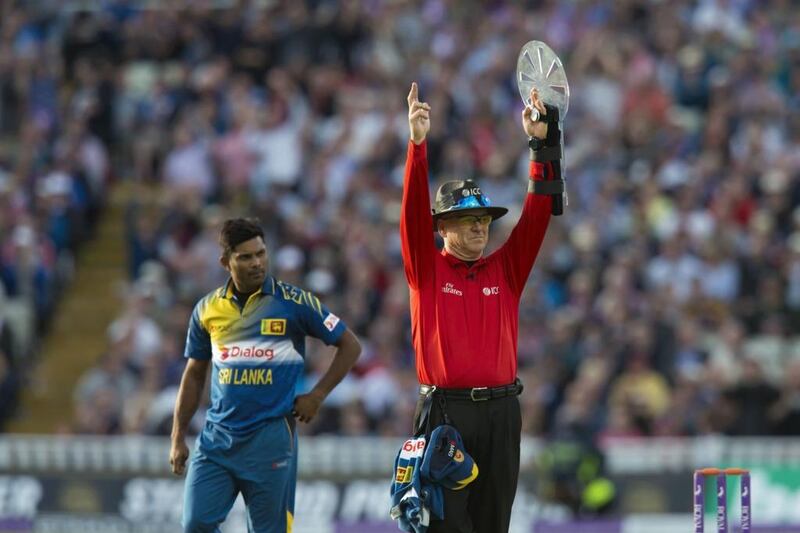BIRMINGHAM, United Kingdom // Umpire Bruce Oxenford was involved in a landmark incident without even giving a decision as he pioneered the use of a protective shield for officials in international cricket on Friday.
The 56-year-old Australian’s left forearm was clad in what looked like a cut down riot shield as he stood in the second one-day international between England and Sri Lanka at Edgbaston.
Oxenford had previously worn the guard during an Indian Premier League match between Gujarat Lions and Royal Challengers Bangalore in April and before that in a World Twenty20 warm-up match involving Australia and West Indies.
But Friday’s match was the first time the unusual piece of equipment had been seen in a full international match.
Also read: Morgan calls opening stand 'remarkable, imposing, entertaining, outstanding'
Traditionally, umpire protection has amounted to no more than a hat or a cap.
But there have long been concerns regarding the safety of officials, particularly in the case of an umpire standing at the bowler’s end, with more and more batsmen in the modern era capable of ferocious hitting.
Those concerns intensified when an Israeli umpire was killed in a club match last year after the ball ricocheted off the stumps and hit him in the head.
Earlier, this year Australia’s John Ward became the first umpire to wear a helmet in an international match during the fourth ODI between Australia and India in Canberra.
An England and Wales Cricket Board spokesman said that if the ball deflected off the shield and was then caught by a fielder, the batsman would be given out.
By contrast, the Laws of Cricket make it clear that if a ball hits the helmet of a fielder before being held, the batsman is not out and dead ball is called.
Officials in ice hockey have long worn helmets to protect themselves from a fast-travelling puck, while baseball umpires standing behind home plate wear face masks similar to those employed by catchers.
sports@thenational.ae
Follow us on Twitter @NatSportUAE
Like us on Facebook at facebook.com/TheNationalSport





